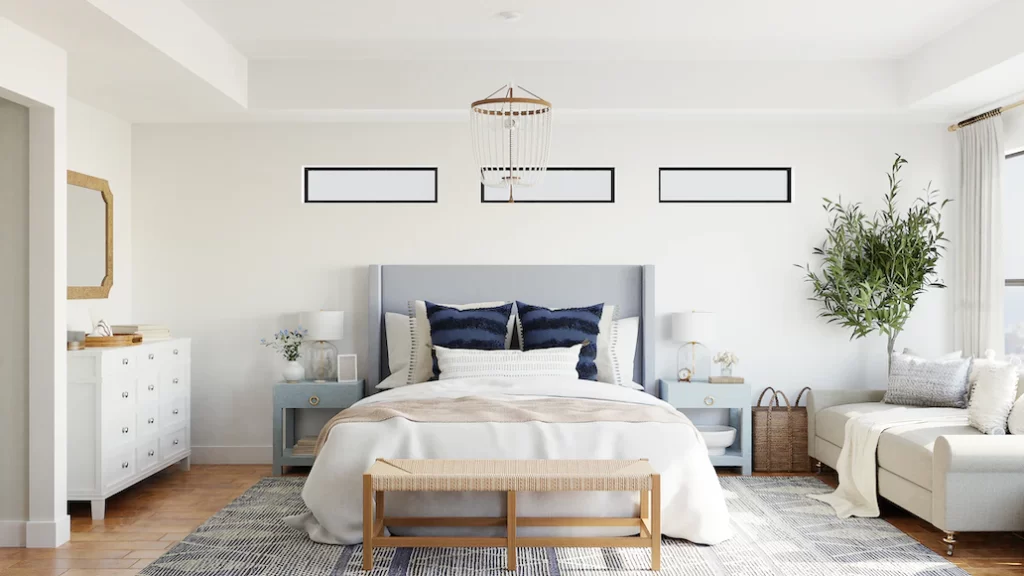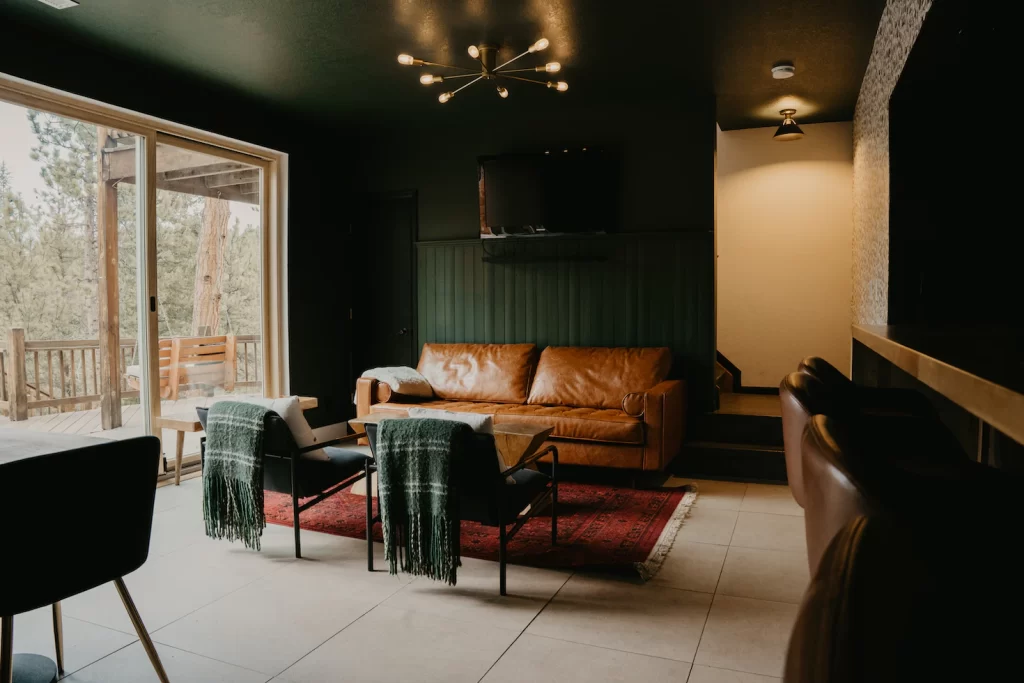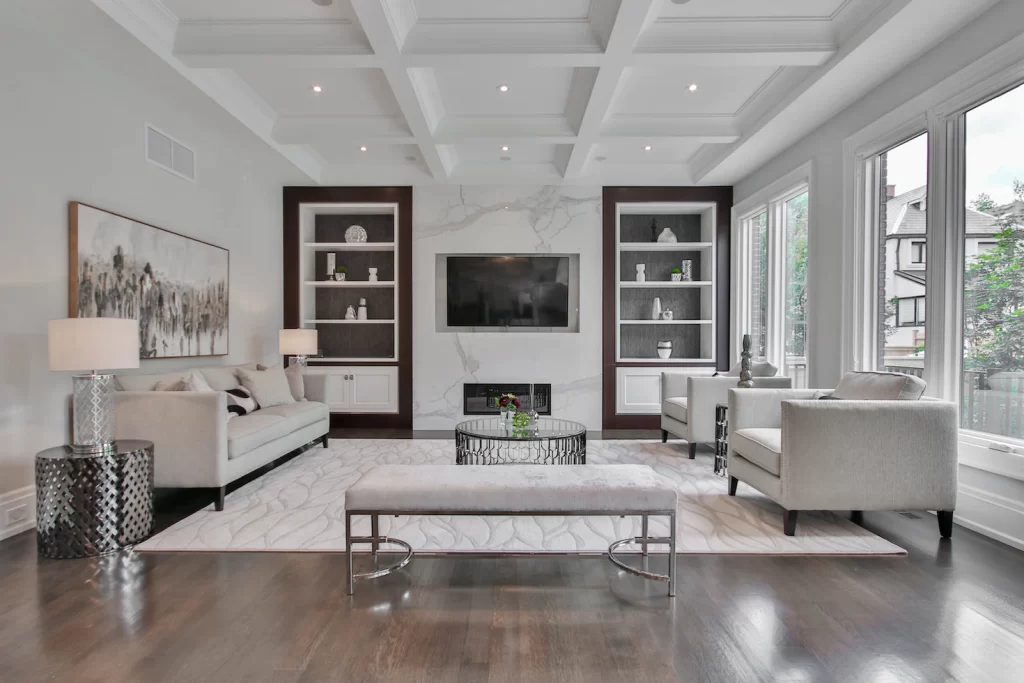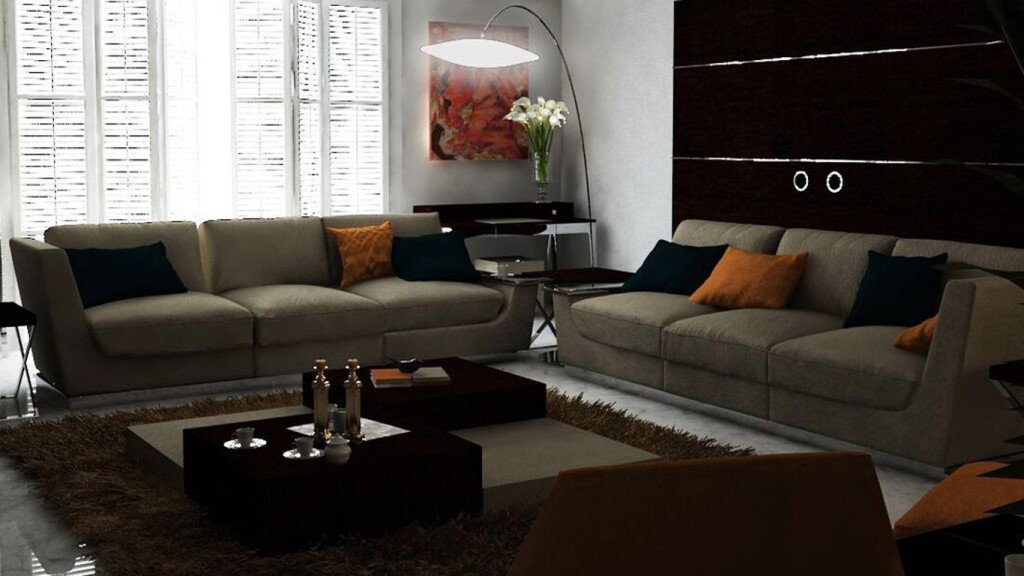What Is The Best Colour To Paint a Ceiling?
A good home makeover involves a plethora of important decision-making, including choosing the best colour to paint a ceiling. Although they’re often overlooked, if you’re going to go the whole nine yards and make sure your renovations look sleek and stylish, fixing up a time-aged ceiling should be a part of the process.
If you ask an average household what colour their ceilings are painted, white is almost certain to be the majority response. Safe, clean and traditional, it’s been a go-to choice for decades.
However, in the fast-paced world of contemporary interior design, the hottest new trend asks you to be a little more daring because, with a full range of exciting options at your fingertips, these underutilised expanses of spare space have the potential to become one of the make or break features of your home’s refurbishment project.
In the opinion of our own elite team of experts, both white and coloured ceilings have their pros and cons, so here is a collective guide on how to make the right choice from the outset.
The benefits of painting a ceiling white

There’s more than one reason why a white ceiling has successfully stood the test of time among both designers and homeowners. Here are some of them:
- White is one of the easiest ways to reflect light, making any room feel big, bright and airy. And as a ceiling takes up around one-sixth of your total space, it can greatly affect how much illumination you are able to infuse into each area of your house.
- Visually, white ceilings often become invisible in a room, so they don’t detract from the noticeability of bespoke furnishings and décor.
- A white ceiling provides the illusion of depth making small rooms look more expansive by drawing the eye upwards and eliminating a visual stop-point.
- In terms of painting, white is easy to touch up and will show fewer mistakes or colour variances. This will allow you to tackle problematic patches one at a time rather than having to re-do your entire ceiling.
- White ceilings are neutral and will go with any colour choice. This allows you to change up your walls as often as you like without having to repaint your ceilings as well.
When you should and shouldn’t paint a ceiling white

If you’re going to take the plunge and explore the world of colourful ceilings, you might want to consider the following:
Your ceiling height:
Because white bounces the light creating a feeling of expansiveness, it tends to make rooms with higher ceilings look cold and cavernous. Using a darker colour will help to lower it and make your space cosier. This is especially useful if you have big, vaulted ceilings that go on forever.
The purpose of your room:
If you’re redoing a room for a specific purpose, consider how your ceiling will affect it. A media room, for example, will benefit hugely from a darker ceiling colour, giving it the same look and feel as a cinema and making the movie screen the focal point of your space.
Open plan living:
If you have an open plan home, your ceiling will be one continuous expanse, making it almost impossible for you to paint each zone a different colour. In this situation, you will need to decide whether white is the best option or if you can live with a specific hue throughout. Bear in mind that your furnishings will change from area to area, making it difficult to match every piece to a non-neutral shade.
Contrast:
If your walls are coloured, don’t make the mistake of thinking that using white on a ceiling will automatically give the impression of spaciousness. In some instances, the contrast will draw your eye up towards the ceiling line which, if very low, can create a cramped aesthetic or make everything look stark. Instead, using the same colour throughout will help to extend the walls upwards, making the room look both limitless and enveloping, especially if you include the skirtings and cornices.
How to paint a ceiling to add personality and style to a room

Adding a splash of colour is sure to take your ceiling to new heights, will add character and interest to your room and has the potential to beautifully highlight any bespoke architectural features.
If you lift your gaze just a little, you might find a beautiful pressed or vaulted ceiling, decorative plasterwork, a gorgeous trim or some impressive beams. So why hide them away or make them fade into the background by painting everything white? These features are, in fact, a fabulous way of making a statement through the use of colour and should be properly considered and celebrated. So consult with your interior designer and find out what paint tricks can be engaged to bring them to the fore.
Create a sense of depth by using a neutral colour palette on your walls and trimmings and a dark colour on your ceiling. Alternatively, paint your skirtings, walls and cornices one colour and use a paler tone on your ceiling. This will help add height and visual engagement.
When using colour to create an impact, contrast is key. This can be achieved in many ways including highlighting the design details on your ceiling or even creating a new feature through the use of stripes, blocks or colour zones within a specific area of your room.
Another useful technique is to bleed the colour of your ceiling downwards so that it extends onto your wall. If you have a picture rail that can be used as a dividing line between two contrasting colours, this is a particularly effective technique to implement.
If your ceiling is made from textured concrete or beautiful wooden panelling, celebrate its uniqueness by leaving it paint-free.
How to choose colours and finishes for a ceiling

Making the right choice when it comes to the paint colour and finishes for your ceiling can be overwhelming and largely depends on the look and feel you are aiming for. Here are some guidelines:
- If you want everything to look smart and well coordinated, paint your ceiling in a lighter shade of the colour you’re using on your walls. It will also prevent your room from looking too dark.
- To create a space that looks unconfined, paint your walls, ceilings and trimmings the same colour. Remember that shadowing on your ceiling will automatically make it look darker, so if your room is small choose a paler colour throughout.
- Use contrasting colours to bring a specific aesthetic to your room, like shades of blue and green if you’re taking a biophilic approach or vibrant yellows if you want a more sunny space.
- Textures also have an effect on the look and feel of your room, so don’t commit to anything until you have tested it out with a paint swatch first. On the whole, popcorn and knockdown ceilings don’t look as good in colour, so go for a smoother surface wherever possible.
- By rule of thumb, a matte finish will give your room a soft, velvety feel but won’t reflect much light and therefore tends to make a space look darker. If you’re looking for something that will enhance the brightness of your room, pick a paint with a slight sheen instead, but be aware that it may highlight any imperfections.
Which colour is best for your home

We all agree that there is absolutely nothing wrong with painting your ceilings white. In fact, in many instances, it’s the right thing to do. But if you’re taking that brave step and branching out into something brighter, you might be debating which colour to settle on and could benefit from a tip or two.
Bear in mind that colour has an effect on your mood and can make or break the aesthetics of your room. Calming tones like sage green or gentle pastels are great if you’re looking for tranquillity, bold hues can add trendiness to your space and deeper shades of green, blue or grey will infuse your room with a sense of refinement.
Dark colours like charcoal, navy blue, brown and even black have become increasingly popular in modern kitchens, adding interest and allowing your floors and cabinetry to stand out. For more insight, read our article on discovering the ideal colour for your kitchen.
The latest bathroom trends are also leaning towards infusions of darker tones and a ceiling is a great place to start, bringing a chic aesthetic and elegant contrasts to white tiles or marble floors. It will also help to instil a cosy atmosphere and balance out the dimensions of the room.
If your bedroom gets plenty of natural light, consider using colours like pale blue, buttery yellow, soft pink or honey, all of which will increase the feeling of airiness without disturbing the calm.
In conclusion
Ceilings give you an exciting new opportunity to enhance the interior of your home and play around with dynamic new ways of infusing style and colour into your space.
At FCI London, we have a dynamic design team who are on hand to give you the best advice and help you make the most of every refurbishment project from luxury sofas to painting techniques and accessories. Pop in and see us today – we’ll have a cup of delicious Brazilian roast coffee at the ready.




